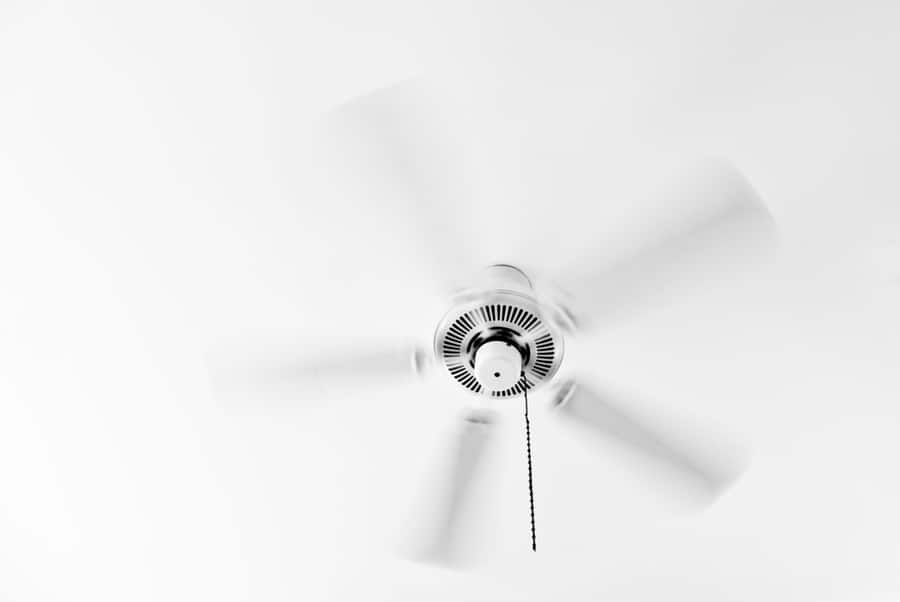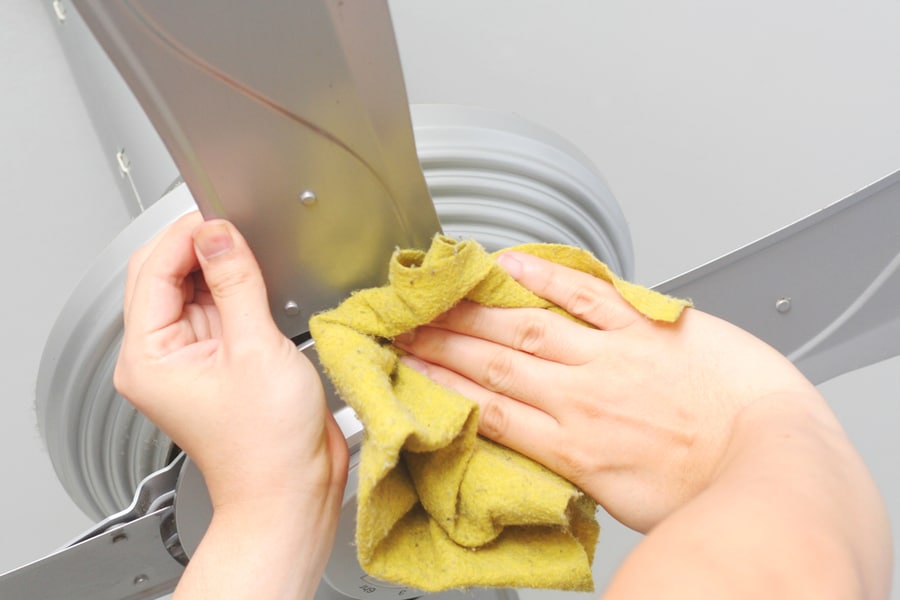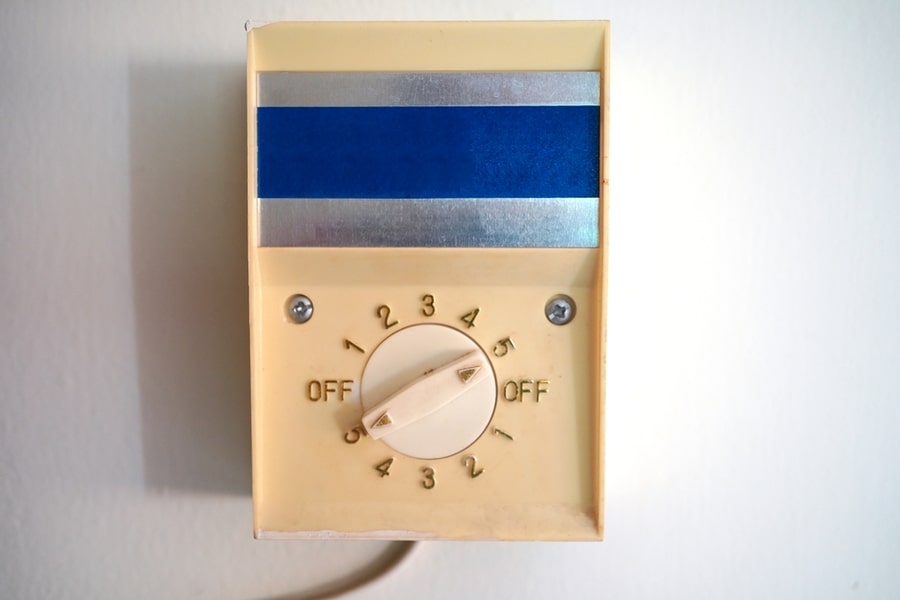
Ceiling fans provide cooling comfort at a low cost. So when those hot summer months come rolling around and you don’t want to spend too much on running your air conditioner, turning your ceiling fan on can help regulate your indoor climate.
However, because they’re quite a distance from your living space, a ceiling fan’s gust can feel significantly dampened as it reaches you on the ground.
So you might find yourself wondering; is there anything you can do to increase fan speed?
Here are some tips you can try.
- Dirt build-up on the blades and various parts of the fan can reduce speed.
- Routine lubrication can reduce friction on moving parts and facilitate more efficient movement.
- Imbalanced blades will inevitably alter airflow, reducing the strength of your fan’s blow.
- Sometimes, fan speed problems can be fixed by simply altering speed settings using available hardware.
- In certain cases, damage to the fan’s internal parts may cause the assembly to slow down.
Ceiling fans come with either a pull chain or a switch that lets you adjust its basic settings. Just like most standard fans, ceiling fans can have up to three different fan speeds to match your preferences.
But if the highest speed setting still doesn’t bring you the cool comfort your desire, there are some things you can try in order to maximize your ceiling fan’s tempo.
How To Increase Ceiling Fan Speed
1. Clean the Blades

Ceiling fans are usually out of reach, so you probably don’t find a lot of opportunity to clean yours. This can lead to an accumulation of dust on top of the blades.
While you might think that’s not much cause for alarm, an overabundance of dust resting on the blades can change the balance and cause your fan to slow down.
Dirt and dust lodged in between mechanisms can also reduce your fan speed.
Over time, the various joints and moving parts of the fan may become blocked by dirt build-up, reducing efficiency despite being on the highest fan speed setting. A routine cleaning might be all you need in order to speed up your ceiling fan.
2. Lubricate Bearings

Appliances with moving parts will require routine lubrication. This helps facilitate the smooth movement of its appendages and joints, reducing friction that could slow down or completely stop the mechanism from working.
Interestingly, some fans come with a lubricant oil reservoir. This small compartment contains oil that dispenses at the rate of a trickle so that the fan is never without proper lubrication.
In other, older or simpler fan models, owners can add lubricant via a small hole just above the motor. You can use any standard oil used for appliances and apply a few drops into the designated refill opening.
3. Inspect for Balance and Symmetry

The curves of your fan blades are very carefully engineered to maximize the gust of wind they can produce. The slightest alterations to these bends and curves can significantly reduce the strength of the air that pushes out from your ceiling fan.
Check to see if the fan is mounted properly. You should also consider the blades and whether they’re all the same shape and alignment.
Some fans have blades that can screw off, and if they’ve become loose, they can cause a reduction in the strength of your ceiling fan’s force.
4. Check the Settings

Sometimes, your fan’s slow speed might be the result of a minor oversight. For ceiling fans with a pull chain, you probably have three predetermined settings low, medium, and high.
If your ceiling fan comes with a wall-mounted speed regulator, you should find a knob that you can turn to fine-tune the speed to your liking.
Before you move any further, check to see if the ceiling fan is set to the right speed. Pulling the chain three times from being turned off will bring you to the highest speed.
Alternatively, you can turn the speed regulator to the maximum setting to speed up your fan’s movement.
5. Assess Its Parts

If you’ve noticed a problem in your fan’s usual speed performance, then you can’t really rule out the possibility of damage or malfunction relating to its internal parts.
Over time, a ceiling fan can give in to wear and tear, encountering performance hiccups that can reduce its cooling efficiency.
Some of the parts that may cause your fan to slow down include the following:
- Pull chain
- Wall switch
- Speed regulator
- Capacitor
- Motor
Unless you’ve had previous experience working with the different parts of a ceiling fan, it’s not recommended that you tinker around with your fan’s internal components.
Instead, call an electrician to asses your fan and perform any necessary repairs.
Summary
Ceiling fans can deliver a cool, comforting breeze into your home to help regulate your indoor climate. But when it just doesn’t seem to blow strong enough, you could find yourself in a sweat. Try these tactics to speed up your ceiling fan, or call in a professional at the first signs of potential damage.
Frequently Asked Questions
Does a Low Ceiling Fan Speed Reduce Energy Use?
Yes, keeping your ceiling fan at a low speed can reduce energy consumption. When you set your fan to the highest speed setting available, you require more work out of the motor and capacitator. In order to work more, these components will inevitably require more power.
On the upside, the increase in energy consumption is marginal at best, and you probably won’t feel too bad about the slight hike when your electricity bill comes around.
How Much Electricity Does a Ceiling Fan Use?
The values change across board depending on the make and model of your ceiling fan. On average, though, a ceiling fan will use about 75 watts per hour.
This is a far cry from an air conditioner’s consumption of up to 1,400 watts per hour. Thus running your ceiling fan to support your AC’s cooling performance should let you dial down your AC’s thermostat to save up on energy.












